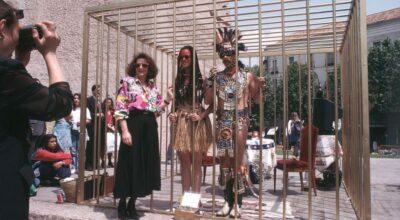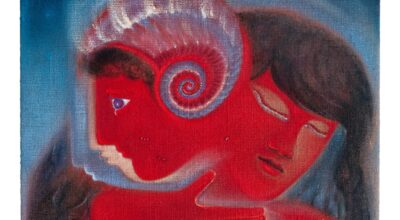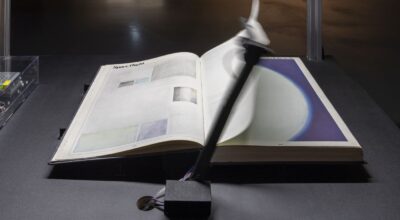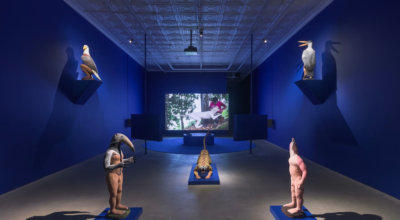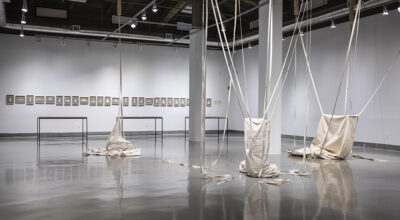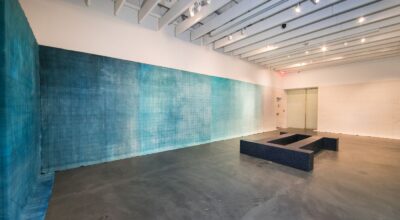English
COCO FUSCO: TOMORROW, I WILL BECOME AN ISLAND
“Tomorrow, I Will Become an Island” at the KW Institute for Contemporary Art is the first major retrospective of Cuban-American artist Coco Fusco (b. 1960, US). For more than three decades, she has been a key voice in discourses on racial representation, feminism, postcolonial theory, and institutional critique.
DANIEL CORREA MEJÍA: SOY EL DUEÑO DE MI CASA
Confronting himself with the complexity of being responsible for his own house, his own existence as a breathing and individual body, Mejía (b. 1986 Medellín, Colombia, based in Berlin) finds through his work an expanded notion of home -one that is not limited to four walls or even the confines of the physical body.
ISAAC JULIEN: LINA BO BARDI—A MARVELLOUS ENTANGLEMENT
“A Marvellous Entanglement” at the Yale School of Architecture is the latest presentation of British filmmaker Sir Isaac Julien’s 2019 film installation, which explores the life and work of Italian-Brazilian architect Lina Bo Bardi, a leading figure in post-war modernism.
LEILA MATTINA: GEOGRAFÍA(S) DEL JIQUILITE AL AÑIL
“Geografía(s) del Jiquilite al Añil! is the inaugural solo exhibition by Puerto Rican artist Leila Mattina in the United States. It encompasses artworks and documentation that offers a comprehensive exploration of indigo production within the Puerto Rican archipelago.
THIS TOO, IS A MAP. LATIN AMERICANS AT THE 12TH SEOUL MEDIACITY BIENNALE
The Biennale is concerned with systems imposed or created outside national borders, including transnational solidarities, ‘underground’ commitments, the coded mapping of data and infrastructure, as well as those of artistic and political communication.
JJAGƗYƗ: AIR OF LIFE
The exhibition explores the profound impact of colonialism, particularly through the history of boarding schools established by the Capuchin Missions in the region. This colonial legacy has led to the decline of Indigenous languages, a disruption in the transmission of cultural knowledge, and the institutionalization of Christianity.
ON THE EDGE OF VISIBILITY – AN INTERNATIONAL SYMPOSIUM
This symposium offers a transcontinental approach and encompasses postcolonial, feminist, and queer perspectives. Topics discussed will consider the concerns and complexities of defining what it means to be a Black or Indigenous woman artist within different cultural settings.
JESSICA KAIRÉ INAUGURATES RUBIN CENTER’S CENTRAL AMERICAN EXHIBITION SERIES
Including five of Kairé’s ongoing series of fabric “Folding Monuments,” along with a corresponding series of works on paper, the exhibition considers the ways in which monuments mark public space and are collectively determined, maintained, or dismantled.
C.J. CHUECA: MERMAIDS IN THE BASEMENT
For “Mermaids in The Basement”, C.J. Chueca transforms the gallery into a metaphorical space where the different works on display take their titles from poems related to water, intertwining into an immersive installation. The title of the exhibition, taken from a poem by Emily Dickinson, suggests a displacement from a natural place, like the sea or any of our own ecosystems, to an urban environment.
GABRIEL CHAILE: ART AND LIFE IN A TIMELESS TIME
His first solo exhibition in New York, at Barro Gallery, is composed of two works from different periods of his own history as an artist. The pieces exhibited at Barro dialogue with the large adobe sculpture conceived for the High Line, Manhattan’s most important outdoor sculpture park.

